Portfolio: Patrick Brown’s “Trading to Extinction”
I first came across Patrick Brown’s work documenting the the exotic animal trade when Emphas.is co-founder Tina Ahrens posted a...
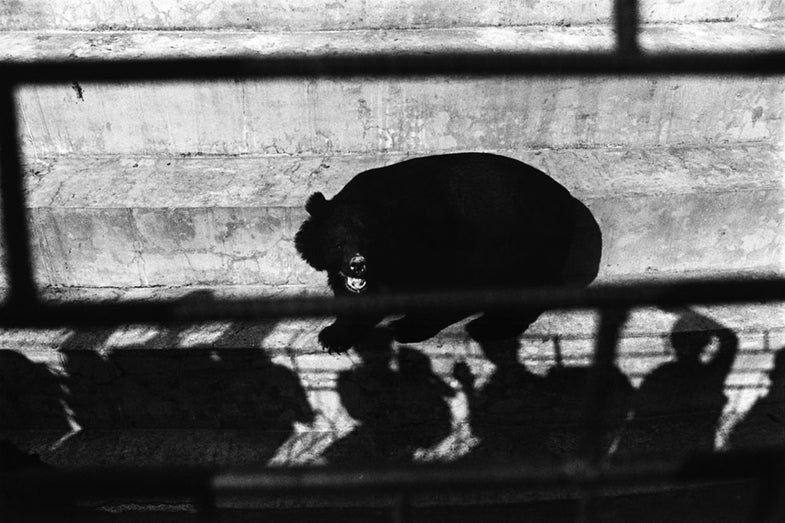
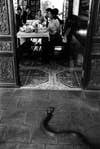
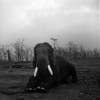

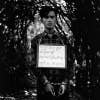
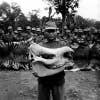




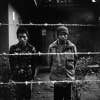


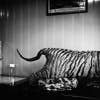



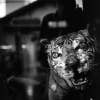
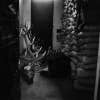
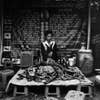

I first came across Patrick Brown’s work documenting the the exotic animal trade when Emphas.is co-founder Tina Ahrens posted a link on Facebook. The tiny thumbnail showed a stark black and white portrait of an elephant. Rather than looking majestic and regal, like it might in a Nick Brandt photograph, the giant animal looked sad. Hobbled. As it turns out, that’s one of the unifying threads in the “Trading to Extinction” project.
Brown has been working on the project for roughly a decade, spending time embedded with various organizations intent upon slowing the trade of exotic animals. The images are beautiful, but the subject matter is intense. It made publishers shy, even though Brown is decorated with prestigious awards like the 3P, the NPPA’s Photojournalism award and a second prize in the World Press Photo Awards for Nature. So, Patrick opted to crowd-fund the book using Emphas.is. When I sat down to talk with Patrick over Skype, the book was just $300 short of being funded. At the time of this writing, he’s well past his initial $14,900 goal with almost two months to go.
How did you get started documenting the animal trade?
It started about ten years ago. I was approached by two guys, Adam Oswell and Ben Davies. They were doing a book about the animal trade and they needed a photographer. At that point, I had no understanding of the animal trade. I think most people didn’t know how big it was. We developed that project and it just grew from there. I just carried on working on it. I won the 3P award in 2005 and that funded me for a few more years working on the project. I kept working away slowly until ten years later, I feel the story is ready to be told in its entirety.
So this project is complete for you?
There has always been one elusive element to the project that has never come to fruition. I’ve tried on multiple occasions to photograph the Chinese doing their anti-animal trafficking program—going with the customs officials and the law enforcement agents. Each time they deny me access. That would really show the world that they’re doing something about it. But, China being China, they’re a little bit paranoid of outsiders coming into their world and taking photographs of them, especially in the official capacity. Maybe it’ll happen in five years when they’re a bit more comfortable about it, but it’s not happening now.
By embedding with these groups, you achieve impressive levels of access and intimacy. Many of the photos have a discernible fine art influence that differentiates them from other documentary photography. Is that done intentionally?
I like to be in these places and interact with the people. I started off as a dance photographer and I never really thought about documentary photography early on. Not coming from a media background and coming in through the fine art and dance world, maybe that’s where that heritage comes from. I approached it in a very methodical way about how I wanted this project to look. And that methodical way is actually to just let it come to you. Let the people move to you. By that, they’re opening up and allowing you in. I have this built-in visually library that I take to my projects and I show it in a way I feel that’s the best way to tell a story.
Is there one image in the series that really exemplifies what this project is about?
There is one image that in my view signifies a multitude of parameters of how the human species has brought down some of the great species on our planet and it’s the one of the elephant in chains. This is a very large bull elephant. He’s a majestic creature, but his entire landscape has just been raped of all trees and fauna. He’s been hobbled at the same time. If I wanted to go through this whole library, that’s the one that signifies what humans have done to the animal kingdom. It’s a very sad image. That is the one image that is the essence of what the project is about.
This project must have put you in a variety of undesirable situations. What kind of hardships did you face when shooting?
Traveling to really remote areas and trekking through jungles led me to quite a few incidents. There were a lot of leeches—a lot of leeches. I took one trip a couple years ago to Northern Laos on an anti-poaching team. They were going after some gibbon poachers. After three days I had lost count at around 78 leech bites all over my body. That was only a few days in the forest. I’ve been chased down the street by very unhappy people with big knives. I’ve been detained in Vietnam. There have been all sorts of unpleasant things, but that’s part of the job, I suppose. You just have to work around it and get through it.
Do you consider yourself an animal activist?
I am an animal activist as such. I love animals and they’re a very important part of the environment that we live in. But this project isn’t about the animals. In my view, the animals are just part of it. This is a study of a subculture of society that happens to be using trading of endangered species as their financial backbone. In my view, I approached it very similar to the way Eugene Richard approached his project “Cocaine True, Cocaine Blue.” Cocaine isn’t the story, it’s a subplot to it all. The story is the people around it. Eugene has been a great influence of my work and many other photographers. The way he approaches a subject—he takes something that is really quite a powerful story actually tackles the subcultures around it. That’s who I tried to approach the animal trade.
You’ve been exposed to some things in the animal trade that most people don’t even know about. How profoundly were you affected personally by the things you experienced?
Yeah. I’ve seen some really horrendous things. But, I’ve also met some incredibly driven people who give me hope. We’re at a very pivotal moment in history where humans are really starting to understand their impact on the globe. A few generations ago we were seeing it, but it didn’t quite register it. Now we’re in an era where we can’t deny it anymore. The facts of science show us that. Taking that and applying it to the people I’ve met who are actually putting their lives on the line—either by death threats from mafia people or just from walking around the forest mapping tigers—here is a lot of positivity. It’s not all doom and gloom at a pivotal time where we need to take action. I started off with a very pessimistic view, but it has become very positive.
What kind of kit do you carry into these harsh conditions?
My kit is very basic. I carry two Nikon FM2s, one with a 35mm lens and one with a 28mm. I carry a Rolleiflex with a macro adapter, a light meter and a bag of film. That’s all I need to go off and do what I need to do.
Is there something preventing you from going digital or do you just prefer to work with film?
If I could show you some of the areas I had been to where I am so wet from humidity or thunderstorms, I don’t know one electronic camera that would’ve survived five minutes. It would have to be in an underwater housing. There were times when I would take my FM2s apart and dry them over fires or in sunlight. I’d rewind the film and open the door up just to dry it out. I think some of the environments in which those cameras have survived would make the engineers at Nikon very, very happy. Or very stressed [laughs].
I’m dying for the day when someone brings out a camera that’s just got a shutter speed dial, a brilliant sensor, an ISO reading and a light meter. I don’t know why we have to have all these things that can fire six frames-per-second. Why don’t we go right back to basics? I’d love an FM2 with a D700 sensor in it. What a great machine that would be. Take all the great cameras in the world and boil them down to their essence and they’re just balancing light with a recording material. All these other things that become involved with it just distract from the essence of photography.
What is it that draws you to the Rolleiflex?
The twin-lens Rollei is just a beautifully-made machine. It’s the Leica of the medium format. It’s compact and it does its job very reliably. You talk about these portraits that I do…It took me many years to figure out what it is about that particular camera that lends itself to the way I do portraits. Most of them are that middle distance, not too close and not too far away. I think it’s actually when I put my head down to the viewfinder to focus and compose, I’m showing the subject the most vulnerable part of my body, which is the top of my head. It sort of disarms them. For a split second, they just drop all anxiety and all the built-up walls that exist between two strangers. The shoulders round and their face relaxes and they realize that I’m actually harmless.
You ended up getting this book funded through the crowd-sourcing website Emphas.is. What drove you to go that route rather than going with a more traditional publisher?
If I had only known now what I know then. I went to NY and saw some publishers. I went to London and to Amsterdam. Most of them said it’s not a palatable subject. A couple of publishers sat on it for a while. Then the publishing climate started to change and people were asking for $30,000 to publish a book. That sounded like self-publishing to me, but they get their stamp on it and I don’t have any control over it. With the amount of money I spent on air travel and hotels and other expenses going to see these publishers, I could’ve actually published the book myself. Tina [Ahrens, co-founder of Emphas.is] saw the project eight or nine years ago. She has seen it grow and she’s always been there. She’s a dear friend as well. She approached me when they were branching out into this publishing project. I was a little bit reluctant, but it’s a new and different way of approaching the same old problem of finding finances to publish a book. They gave me great freedom.
Do you think this crowd-funded model will cause the publishing model to shift?
I don’t think it’s going to change the publishing world. This is going to be something different. But, now that it’s received this funding, I’ve been approached by three publishers who have said, “Oh, we can distribute that.” But where were those guys a few years ago when I really did need them? It’s taking little bits of pieces from different business models and stitching them together to suit the new environment that we live in today. Who knows where we’re going to be in five years or ten years or even two years. But crowd funding fills a void for publishers and photographers, but also for consumers who are ultimately going to be buying these books. They’re very active in the way they’re supporting a book. Maybe they’re not going to give $100 to WWF, but maybe they’ll support a book about the animal trade because they think it’s a better way to spread the word about this particular cause or subject matter.
